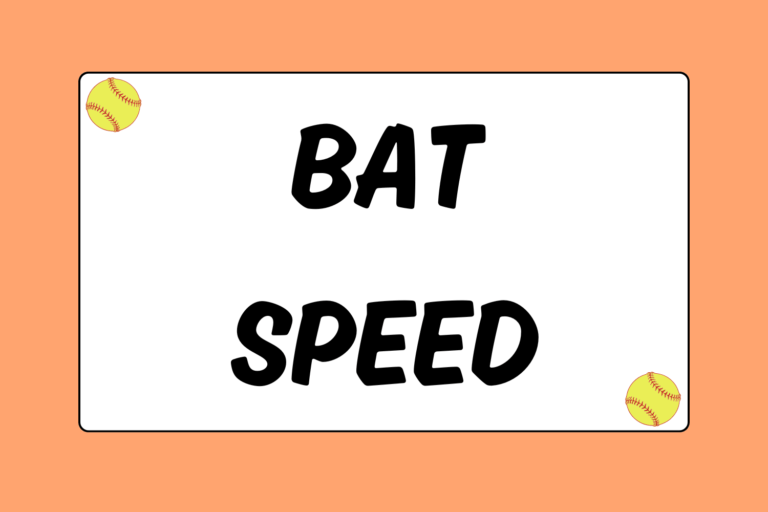Have you ever wondered how some players are so swift around the bases? Have you ever asked yourself how you can become a better base runner? The answer isn’t always as simple as being fast; it’s a matter of being smarter on the base paths. This guide will show you how to cover all the bases with emphasis on a few techniques that can help you become a smarter and more dangerous base runner.
Mental Preparation
The most crucial thing you need to know at all times is the number of outs in the inning because you become a different runner depending on the situation. With two outs, you go as hard as you can on every hit. If there are less than two outs, you’ll often want to be cautious (though still aggressive) while traveling to the next base.
Running to First Base
The first few steps out of the batter’s box are crucial. They need to be explosive! Your first steps should be short and quick, increasing your stride as you approach first base. There are a few other fundamentals to keep in mind:
Break the Tape at First Base
If you watch any track and field event, pay close attention to how sprinters finish their races. They literally break the tape at the end of the runway to win the race. This motion is exactly how you want to run through first base.
Although It might seem unnatural to “break the tape” at first base, this is the fastest way to get to the bag. What’s more, umpires sometimes see your upper body when you are running across the base instead of your feet. If the play is close and you “break the tape,” your motion may give the umpire the illusion that you have already tagged the bag (even if you haven’t), and you might earn yourself a safe call!
Run Through the Bag
The most fundamental thing that you should do every time is to run through first base. Never stop or slow down before you touch the base. Even if the ball is a pop-up or an easy ground out, “break the tape” and run through the bag. You’d be surprised how many times the ball is dropped and you have a second chance to help your team score a run.
No Leaping
A common and misguided technique runners often use is leaping to first base in hopes of beating out the throw. Do not do this. It may feel faster, but it’s not. It takes more time to leap through the air than it does to continue running through the bag, plus it creates a greater risk of injuring yourself.
The Break-down
After running through first base and “breaking the tape,” the next step is to break down. After passing the bag, do rapid stutter-steps in order to stop your feet. You should typically be able to stop within three stutter-steps after first base.
Break down while turning your shoulders and body to the right so you are facing foul territory. By turning your back to the infield, you’ll be able to see overthrown balls and better judge whether you can aggressively take second base.
Leading Off
The defensive team should not be able to tell the difference between your lead-off and the first few steps of a steal, which means the first few steps of your lead-off should be hard and quick to give the illusion that you are going to steal. This uncertainty keeps the defense on their toes and can potentially distract the pitcher and catcher.
Foot Placement for Leadoffs
Where you place your lead foot on the bag is important in getting you prepared to advance to the next base. There are two common techniques for positioning your feet at a base as play begins, and what you choose is completely up to you.
- The first option is to place your front foot on top of the bag. Your toe should be on the dirt while the ball of your foot is on the base, so you can push off the bag for momentum.
- The second option is to place your lead foot on the outside of the bag, completely on the dirt. Line your toe up with the front of the bag.
The difference between the two feet positions is what the umpire sees. Using the first position, the umpire will know the second you take your foot off the base. Your foot will lift entirely off of the base, creating clear separation.
Using the second position, you have the opportunity to leave the base a fraction of a second earlier. As you lift your foot to lunge forward, the base is still behind it, giving the umpire the illusion that you are still on the base when you are really taking your first step forward.
Timing for Leadoffs
Softball rules dictate that you cannot leave a base until the pitcher releases the ball. You want to time your motion so you leave the base at the same time the pitcher releases the ball.
The Rocking Motion
You can ensure good timing by perfecting your rocking motion, which works as your timing mechanism and prepares you to lead-off or steal the next base. The rocking gives your body momentum off the bag.
When the pitcher throws his or her arm backward, rock your body backward. Then when the pitcher swings the arm forward to pitch the ball, you rock forward and start leaving the bag. You want to time it so that you rock forward and subsequently push off the bag at the exact moment the pitcher releases the ball.
Stealing Bases
The most critical aspect of stealing bases is timing; if you’re late, you will not be successful. However, the proper timing for stealing and leading off is different.
When you are leading off, you aren’t trying to beat out a throw to the next base, so you can afford be a split-second late. You cannot be late trying to steal. Study the pitcher to develop precise timing, so that the instant the pitcher releases the ball, you should be on your way to the next base.
Rounding the Bases
Many players take too much time rounding the bases, which can be costly when the ball is being thrown in from the outfield, especially if there is a close play.
You want to approach first base as if you are following a question mark drawn in the dirt. Sprint down the baseline until there are about three stride lengths between you and the base. When you make your turn, it should be tight enough so you tag only the inner corner of the base with one foot (never run on top of the bag). Ideally, try to tag the base while in stride to avoid stutter-stepping or slowing down.
Your turn should generally consist of only three strides. After rounding the base, your body should be turned facing the next base. Do not make your turn so wide that you stray far outside the baseline. Making a tight turn will put you on the fastest track to the next base.
Tagging Up
Tagging up is your responsibility as a runner. If there are less than two outs and the ball is hit into the air, turn your body to watch how the ball is played. Start to retreat back towards your base if it looks like the ball is going to be caught.
If the ball is hit deep enough for you to advance, you need to get back to the base and ready yourself to sprint to the next bag by the time the ball is caught. The second the ball hits the fielder’s glove, go! Just remember not to leave before the fielder catches the ball, or you’ll be called out.
Run Hard, Play Hard
The most important factors in successful base running are aggressiveness and awareness of the situation at all times. The worst thing you do is run blindly; you don’t want to be picked off because you took too big of a lead on a line drive, and you don’t want to miss scoring a run because you didn’t tag up. Running the bases effectively takes hard work and tenacity, find an open field and get some practice! Be patient, be alert, and always look to take the next base.





